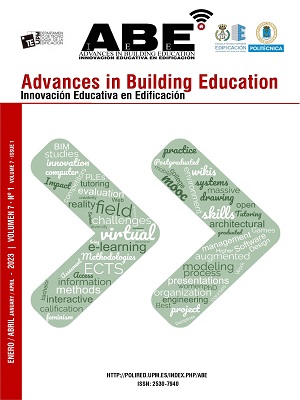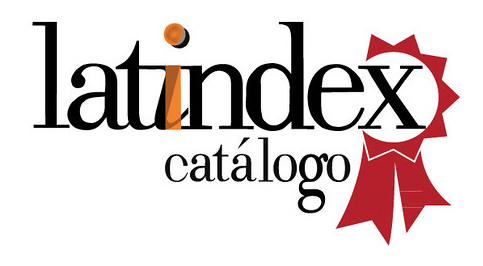Casting concrete with fabric formwork: Active learning methodologies in architectural education Fabricando hormigón con encofrados textiles: Metodologías de aprendizaje activo en educación arquitectónica
DOI:
https://doi.org/10.20868/abe.2023.1.5087Keywords:
Hormigón, encofrado textil, Miguel Fisac, Concrete, fabric formworkAbstract
Basándose en el material producido por dos grupos de estudiantes del Máster de Arquitectura dirigidos por el autor y otros académicos en la Universidad de Newcastle (Reino Unido), este artículo examina las diferentes maneras en las que estudiantes de arquitectura desarrollan su entendimiento de la investigación de materiales siguiendo metodologías de aprendizaje activo experimentando con hormigón. En el material analizado, los estudiantes exploraron el potencial de innovadores métodos de encofrado, centrándose en el uso de materiales textiles como encofrado de paneles y columnas a pequeña escala. Los trabajos se basaron en el trabajo pionero con encofrados flexibles desarrollado por el arquitecto español Miguel Fisac en el siglo veinte, proponiendo a los alumnos una serie de ejercicios de fabricación de hormigón gradualmente más complejos. El análisis comparativo de los trabajos aboga por una diferente aproximación pedagógica a la educación arquitectónica, en la que el trabajo manual directo con materiales juega un papel fundamental en el proceso de aprendizaje de los alumnos.
Abstract
Based on the material from a couple of Master of Architecture studios taught by the author with other colleagues at Newcastle University, this paper examines the ways higher education students in architecture hone their critical and creative understanding of materials research by following specific learning through making methodologies when working with concrete. The studios explored the potential of innovative methods of shuttering for concrete construction, focusing on the use of fabric as formwork for the creation of small columns and panels. They built upon the work with fabric formwork developed by Spanish architect Miguel Fisac in the twentieth century, asking students to engage with casting concrete in a series of exercises that became progressively more complex. The comparative examination of these projects argues about a more holistic pedagogical attitude to architectural design, in which a hands-on approach working with materials plays an important role in the student learning process.
Downloads
References
Schjeldahl, P. (1994) Columns & Catalogues, Great Barrington, MA: The Figures, pp.196-200.
Veenendaal, D., West, M., Block, P. (2011) History and overview of fabric formwork: using fabrics for concrete casting, Structural Concrete, vol. 12, pp. 164-177. https://doi.org/10.1002/suco.201100014
Fisac, M. (2007) Carta a mis sobrinos (estudiantes de arquitectura), Ciudad Real: Fundación Miguel Fisac , pp.44-45
Peris López, D., Peris Sánchez, D. (2020) Los hormigones con encofrados flexibles de Miguel Fisac, Cuadernos de Estudios Manchegos, vol. 45 pp. 405-446
Chandler, A. (2007) Concrete as Equipment, in: Chandler, A., Pedreschi, R. (Eds.), Fabric Formwork, London: RIBA Publishing, pp. 5-19.
Downloads
Published
Issue
Section
License
ABE (Advances in Building Education / Innovación Educativa en Edificación) does not charge authors for processing or publishing an article and provides immediate Open Access to its content. All content is available free of charge to the user or his institution. Users are permitted to read, download, copy, distribute, print, search or link to the full text of articles, or use them for any other lawful purpose, without prior permission from the publisher or author. This is in accordance with the BOAI definition of open access.
- Authors retain the copyright and grant to the journal the right to a Creative Commons attribution / Non-Commercial / Non-Derivative 4.0 International (CC BY NC ND) License that allows others to share the work with an acknowledgement of authorship and non-commercial use.
- Authors may separately establish additional agreements for the non-exclusive distribution of the version of the work published in the journal (for example, placing it in an institutional repository or publishing it in a book).
Unless otherwise indicated, all contents of the electronic edition are distributed under a Creative Commons license.














